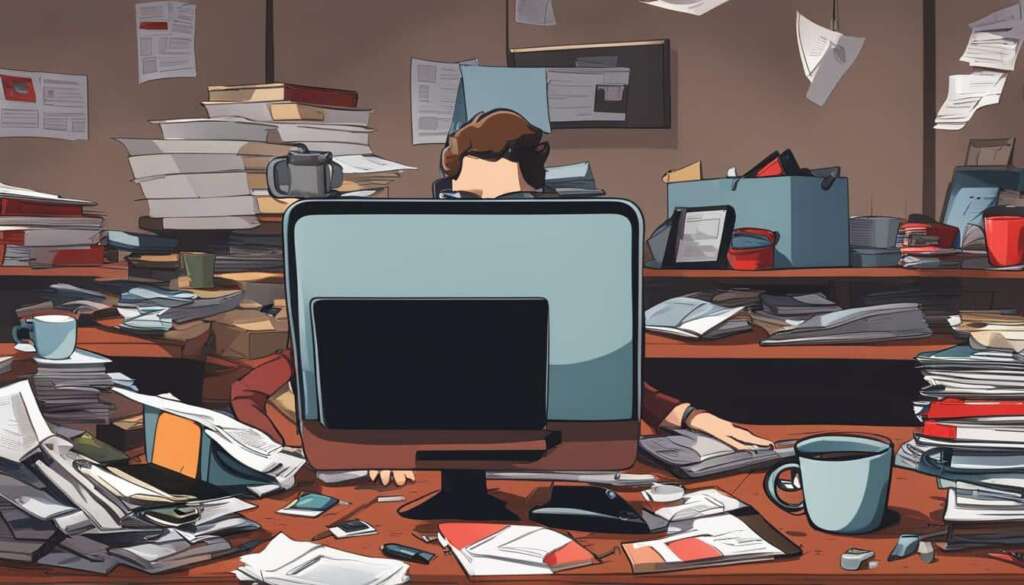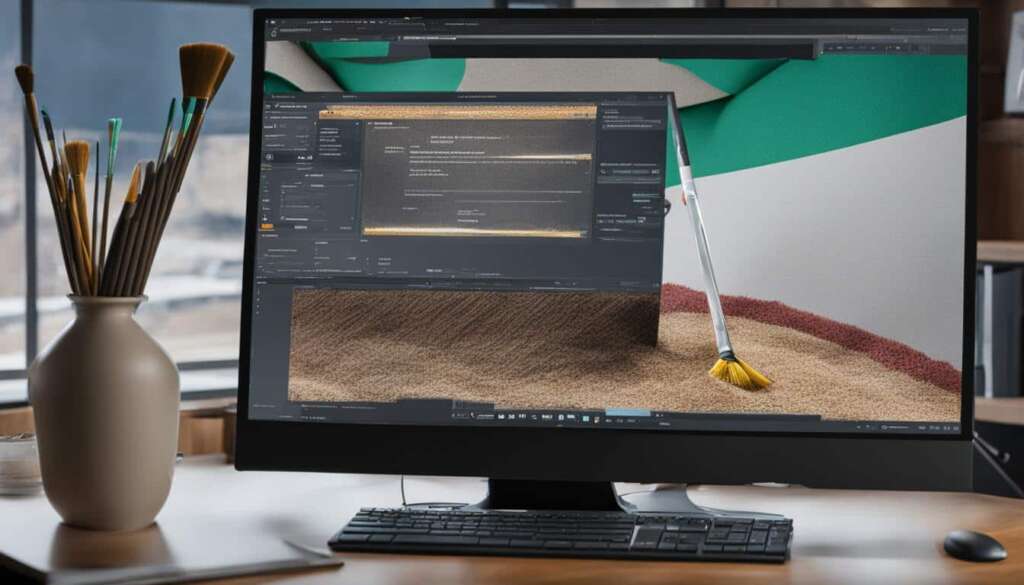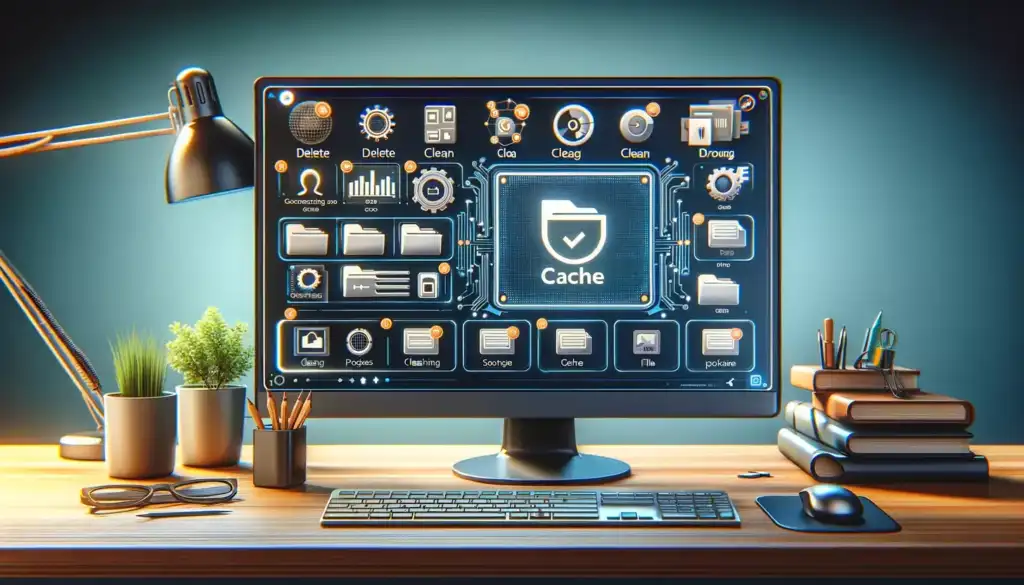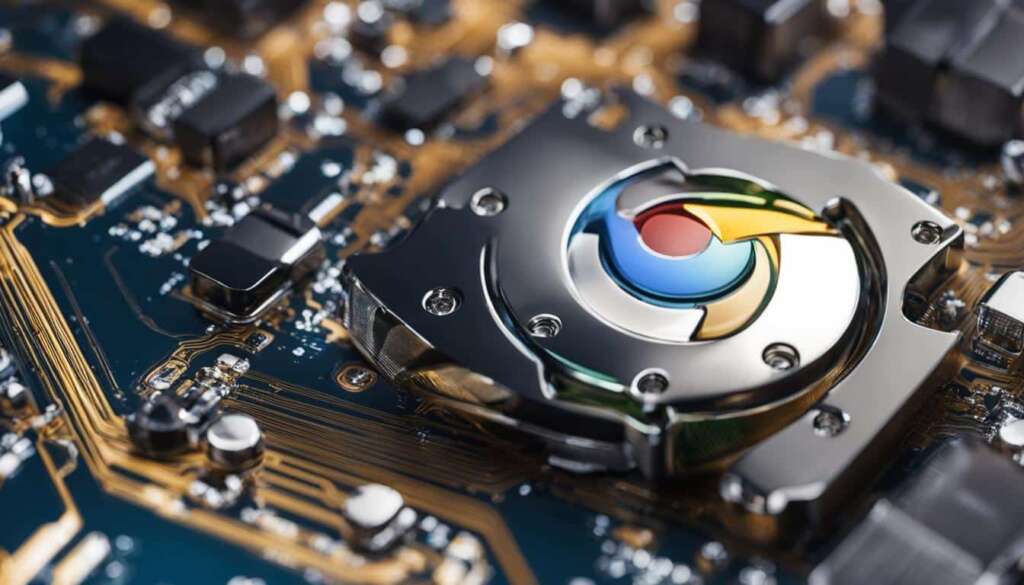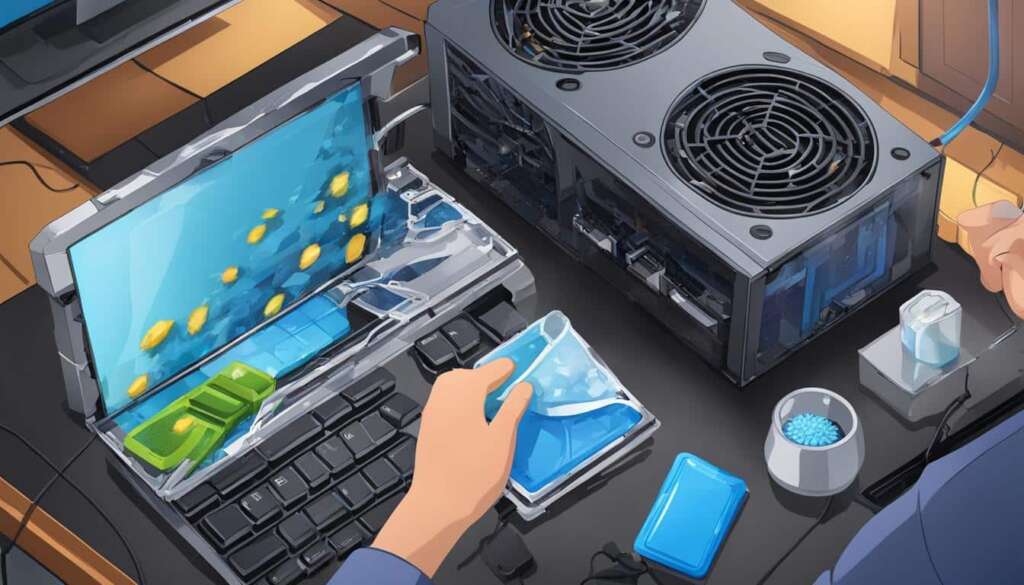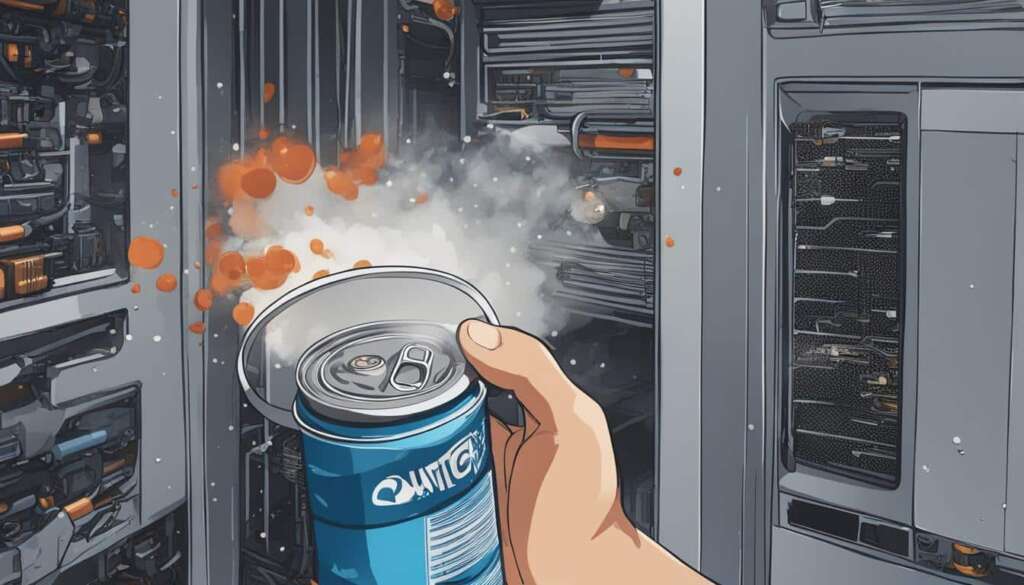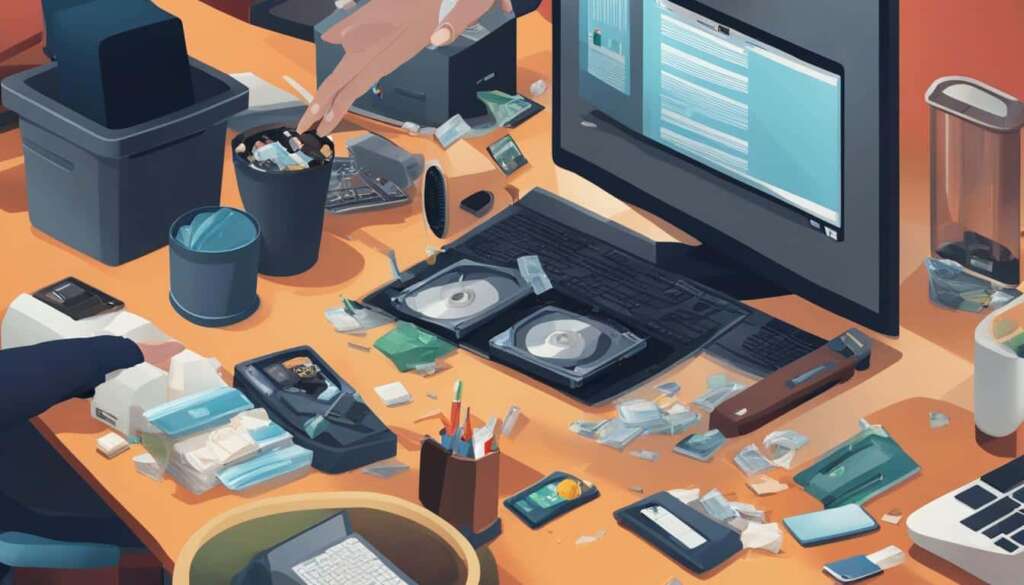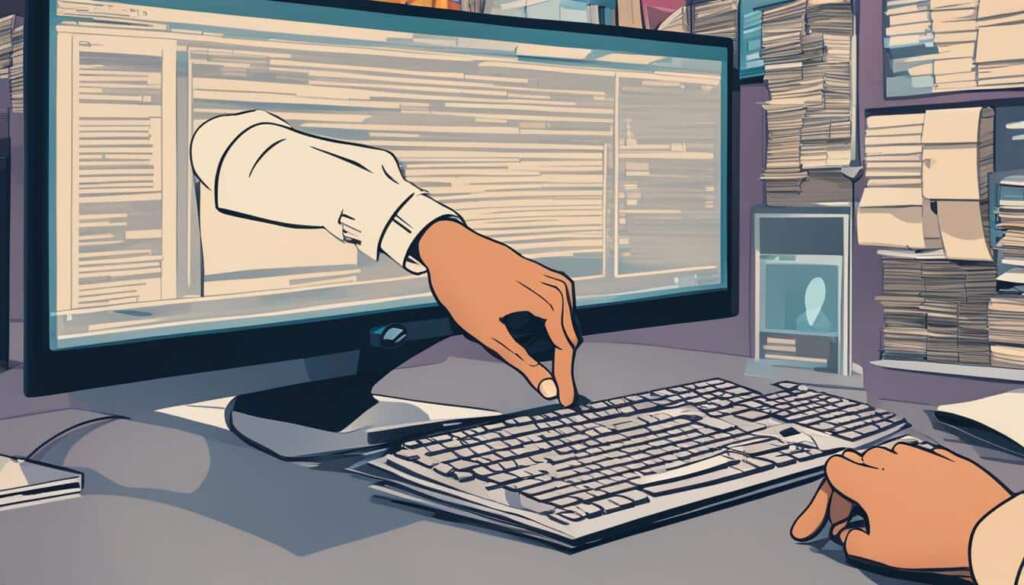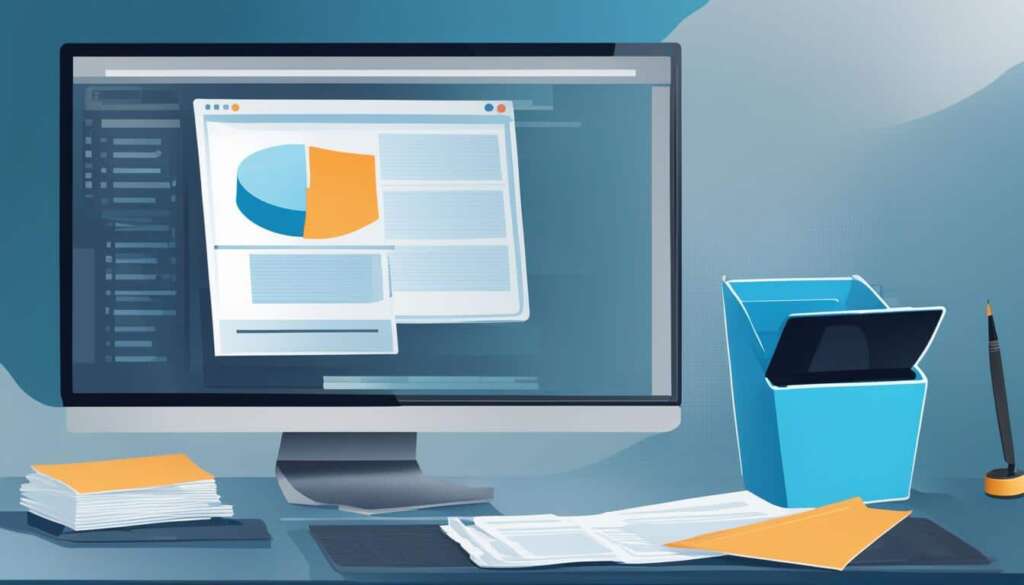Table of Contents
In today’s digital age, our computers play a crucial role in both our personal and professional lives. However, as we store more and more files and install various applications, our computers can quickly become cluttered and sluggish. If you’re experiencing a lack of storage space or sluggish performance, it’s time to clear up space on your PC. In this article, we’ll provide you with some easy and effective PC cleaning tips to optimize your computer’s storage capacity and ensure smooth operation.
To begin clearing up space on your PC, one of the first steps is to free up disk space. By doing so, you’ll not only create room for new files but also enhance your computer’s overall performance. In Windows 8.1, you can access the Disk Space settings by swiping from the right edge of the screen and selecting “Settings” and then “Change PC settings.” From there, navigate to “PC and devices” before selecting “Disk space.” Here, you can view the amount of free space and total size on your PC.
Another powerful tool you can utilize is the Disk Cleanup tool, which is available in most Windows operating systems. By clicking on the Start button, searching for “Disk Cleanup,” and selecting the desired drive to clean up, you can remove unnecessary files and free up valuable disk space.
In addition to freeing up disk space, organizing and managing your files is vital for maintaining an efficient computer. Start by deleting unnecessary files and folders using File Explorer. Simply searching for “This PC” in File Explorer allows you to assess the current space on your PC and identify large files that can be safely deleted.
Furthermore, consider saving files that you want to keep but don’t necessarily need on your PC to removable media such as external drives, USB drives, DVDs, or cloud storage. By embracing these alternative storage options, you can declutter your PC while still retaining easy access to your files when necessary.
If you find yourself frequently needing additional storage space, don’t fret. There are additional options to expand your PC’s storage capacity. SD cards, USB drives, and even cloud storage or network drives are all common methods for accommodating your growing storage needs. However, be sure to verify the compatibility of SD cards and USB ports with your specific PC model.
By implementing these easy PC cleaning tips, you can improve your computer’s performance, optimize storage capacity, and ensure a seamless computing experience. Don’t let a cluttered PC slow you down – take action today and enjoy the benefits of a clean and efficient computer.
How to Free Up Disk Space on your PC
One of the first steps in clearing up space on your PC is to free up disk space. In Windows 8.1, you can access the Disk Space settings by swiping from the right edge of the screen and selecting “Settings” and then “Change PC settings.” From there, you can select “PC and devices” and then “Disk space” to view the amount of free space and total size on your PC.
In Windows 8.1, you can access the Disk Space settings by swiping from the right edge of the screen and selecting “Settings” and then “Change PC settings.” From there, you can select “PC and devices” and then “Disk space” to view the amount of free space and total size on your PC.
You can also use the Disk Cleanup tool by clicking on the Start button, searching for “Disk Cleanup,” and selecting the desired drive to clean up.
- Swipe from the right edge of the screen and select “Settings”
- Select “Change PC settings”
- Choose “PC and devices”
- Select “Disk space”
- Locate the desired drive
- Click on “Clean up system files”
- Select the types of files you want to delete
- Click “OK” and then “Delete Files”
Additionally, uninstalling desktop and Store apps you no longer need can also help free up space on your PC. To uninstall these apps, go to the Start menu, locate the app you want to remove, right-click on it, and select “Uninstall.”
Disk Cleanup Tool Overview
The Disk Cleanup tool is a built-in feature in Windows that allows you to free up disk space by removing unnecessary files from your computer. To use the Disk Cleanup tool:
- Click on the Start button
- Search for “Disk Cleanup” in the search bar
- Select the desired drive you want to clean up
- Click “OK”
- Select the types of files you want to delete
- Click “OK” and then “Delete Files”
| Type of Files | Explanation |
|---|---|
| Temporary Files | These files are created temporarily by various programs and can be safely removed. |
| System Files | These are files that are no longer necessary for the system to function correctly. Removing these files can free up significant disk space. |
| Windows Error Reporting Files | These files contain information about program or system errors. Deleting them does not affect your computer’s performance. |
| Recycle Bin | These are files that have been deleted but not yet permanently removed. Emptying the recycle bin can free up disk space. |
To optimize your PC’s performance, regularly perform disk cleanup and uninstall unnecessary apps. By following these steps, you can effectively free up disk space and ensure your PC runs smoothly.
Organizing and Managing Files
Another important aspect of clearing up space on your PC is organizing and managing your files. A cluttered file system can make it difficult to find and access the files you need, resulting in wasted time and decreased efficiency. By implementing effective file organization strategies and deleting unnecessary files, you can optimize your computer’s storage capacity.
Deleting Unnecessary Files and Folders
When it comes to file organization, the first step is to identify and delete unnecessary files and folders. Using the File Explorer in Windows, you can easily navigate through your computer’s file system to locate and delete files that are no longer needed. Start by opening File Explorer and selecting “This PC” to view the current storage space on your PC.
Within File Explorer, you can sort files by size to identify large files that are taking up significant space on your PC. Consider deleting files that are duplicates, outdated, or no longer relevant to free up valuable storage space. Be cautious when deleting files and ensure that you do not delete any important system files.
Utilizing Removable Media for File Storage
In addition to deleting unnecessary files, utilizing removable media is an effective way to free up space on your PC while still having access to your files. Removable media refers to external storage devices such as external drives, USB drives, DVDs, or cloud storage.
By saving files that you want to keep but don’t necessarily need on your PC to removable media, you can create more room on your computer’s hard drive. This allows you to keep your files organized and easily accessible, while reducing the strain on your PC’s storage capacity.
Organizing Files for Easy Access
Once you have deleted unnecessary files and utilized removable media, it’s essential to organize the remaining files on your computer for easy access. Consider creating folders with clear and descriptive names to categorize your files based on their content, projects, or importance. This will help you locate specific files more efficiently and avoid cluttering your desktop or main folders.
Moreover, you can further enhance file organization by using subfolders within main folders. This hierarchical structure allows for a more organized and logical arrangement of files. Utilize naming conventions that make sense to you and consistently apply them to maintain a cohesive file organization system.
| File Organization Tips | Benefits |
|---|---|
| Create descriptive folder names | Facilitates quick file retrieval |
| Use subfolders for categorization | Creates a hierarchical structure |
| Consistently apply naming conventions | Maintains a cohesive organization system |
Implementing these file organization tips will not only help you clear up space on your PC but also improve your overall productivity when accessing and managing files. With a well-organized file system, you can easily find the documents, photos, or videos you need without wasting time searching through cluttered folders.
Adding Removable Storage
If you find that you frequently need additional storage space, you can consider adding removable storage options to your PC. SD cards, USB drives, and DVDs or CDs are common options for expanding storage capacity. It is important to check with your PC manufacturer to understand which types of SD cards and USB ports are compatible with your PC.
Additionally, utilizing cloud storage or network drives can provide remote access to your files and reduce the need for local storage on your PC. Cloud storage services like Dropbox, Google Drive, or OneDrive offer convenient and secure ways to store and access your files from anywhere with an internet connection.
By incorporating removable storage options such as SD cards, USB drives, or cloud storage, you can easily expand your PC’s storage capacity to accommodate your growing storage needs. Whether you prefer the convenience of portable storage or the flexibility of cloud storage, these options provide practical solutions for managing your files and freeing up space on your PC.
FAQ
How can I clear up space on my PC?
To clear up space on your PC, you can free up disk space, uninstall unnecessary programs, and organize your files.
How do I free up disk space on my PC?
In Windows 8.1, you can access the Disk Space settings by swiping from the right edge of the screen and selecting “Settings” and then “Change PC settings.” From there, you can select “PC and devices” and then “Disk space” to view the amount of free space and total size on your PC. You can also use the Disk Cleanup tool by clicking on the Start button, searching for “Disk Cleanup,” and selecting the desired drive to clean up.
How can I organize and manage my files to clear up space on my PC?
You can start by deleting unnecessary files and folders using File Explorer. Searching for “This PC” in File Explorer allows you to view the current space on your PC and identify large files that can be deleted. Additionally, you can save files that you want to keep but don’t necessarily need on your PC to removable media, such as external drives, USB drives, DVDs, or cloud storage.
What are some options for adding removable storage to my PC?
Some common options for expanding storage capacity include SD cards, USB drives, DVDs or CDs. It is important to check with your PC manufacturer to understand which types of SD cards and USB ports are compatible with your PC. Additionally, utilizing cloud storage or network drives can provide remote access to your files and reduce the need for local storage on your PC.

